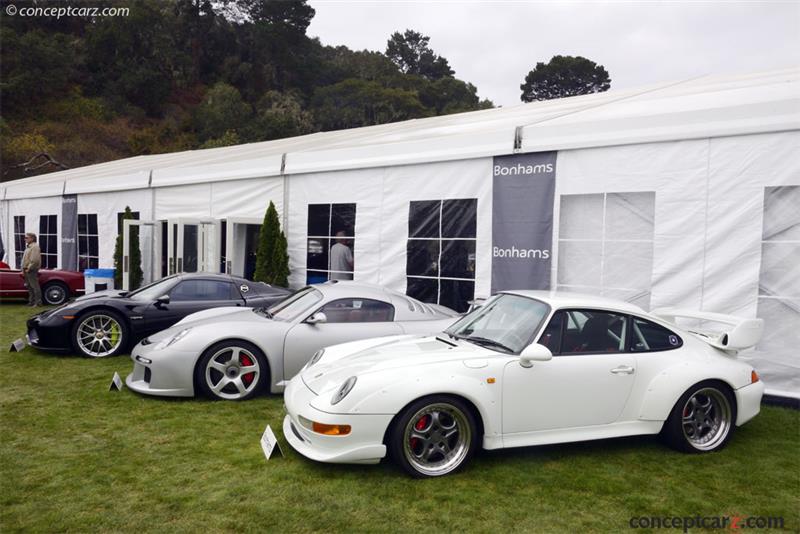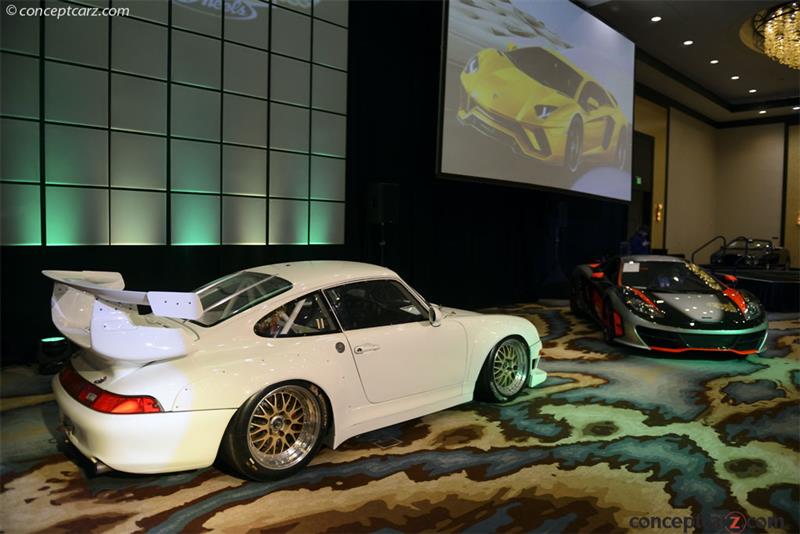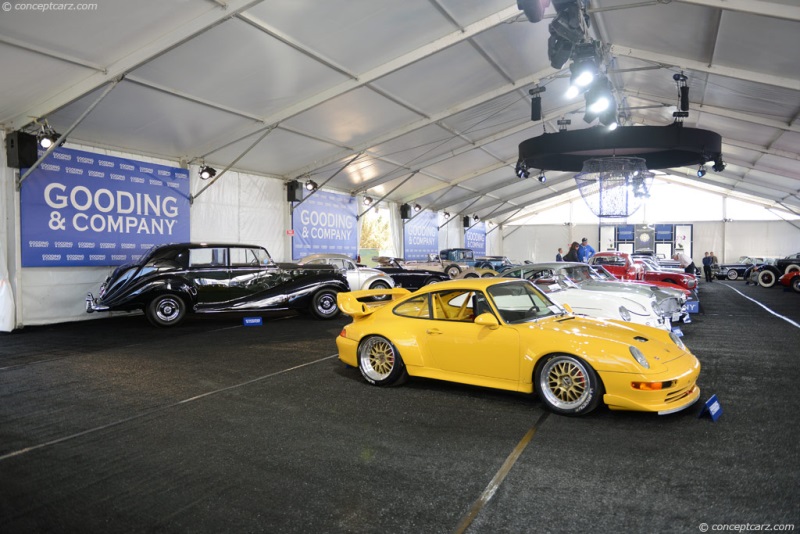The new Porsche 993 was introduced in January of 1994 and sold through early 1998 (in the United States, it was sold from 1995 through 1998), the last of the great air-cooled 911s. The new coupe continued to use the roof and front deck lid of its predecessor, the 964 model, with new bodywork, variable focus high-beam headlights, poly-ellipsoid low-beam, and a six-speed transmission. The new multi-link rear suspension carried upper and lower A-arms with transverse links, and the new wheels concealed larger disc brakes and pads. The front and rear sub-frames were significantly strengthened, meaning that if they were bent in a crash, they would have to be replaced as they could not be straightened. Porsche claimed that only 20% of the parts were carried over from the previous generation.
CoupeBy this point in history, all-wheel-drive had been proven useful and beneficial, with success in rally via Audi's Quattro, and the track success of the Nissan Skyline. Its overwhelming success led all-wheel-drive to be banned by most sanctioning bodies by the mid-1990s. This was problematic for Porsche whose Turbo was fitted with four-wheel drive. The solution was to build the GT2 with rear-drive only, a system that was significantly lighter than the four-wheel drive alternative. The Porsche GT2 was the racing version of the 993 Turbo and intended to compete in the FIA GT2 class racing. It was birthed out of necessity as the cancellation of the World Sports Car Championship in 1992 meant a return to production-based GT cars. Porsche needed a new, competitive high-performance variant that could be built in large-enough quantities for street use and thus be homologated for racing. The 993-series Turbo was the perfect launching point for this endeavor. Its new light-alloy rear subframe was connected to a dual wishbone suspension, replacing the 911's traditional rear trailing arms which often suffered from trailing-throttle oversteer. The new VarioRam induction system maximized torque through the middle of the rev range.Since the road-going GT2 was not available to the United States market, Porsche did not have to cater to those crash-test standards or the need to comply with U.S. emissions and safety-related requirements. The U.S. market was not forgotten, however, as in 1995, Porsche gave the 993 RS, a 'homologation special' that allowed the 993 RSR to run in the BPR's N/GT category with a 3.8-liter engine.
CoupeAlong with performance and sophistication, weight reduction was very important. By stripping the interior, and devoid of undercoating, sound-deadening insulation, and numerous power-assisted systems, weight was trimmed to about 3,100 pounds. Aluminum was used for the door panels, hood, and rear spoiler, along with exaggerated bolt-on fiberglass fender flares to cover 18-inch three-piece racing wheels with titanium centers. These lightweight wheels were wrapped with appropriately sized high-speed–rated tires (235/40 ZR 18 front and 285/35 ZR 18 rear).The air-cooled, twin-turbocharged Porsche flat-six engine displaced 219.7 cubic inches (3.6 liters) and had two valves per cylinder, a 3.94-inch bore, and a 3.01-inch stroke. It initially produced 424 horsepower (430 PS) at 6,000 RPM and 432 lb-ft (586 Nm) of torque at 3,500 RPM. This equated to only 6.6 pounds per horsepower, a figure that actually surpassed the 959. In 1998, modifications to the engine boosted output to 444 horsepower. In racing guise, the M64/60R engine with its twin intercooled turbochargers developed 480 horsepower. Power was fed to the rear wheels via a new six-speed transaxle and an asymmetrical 40/60 limited-slip differential (ABD).Zero-to-sixty mph was accomplished in less than four seconds, and its top speed was nearly 190 mph.
CoupeThe road-going GT2 (Strassenversion) was badged as the 911 GT and a total of 194 examples were built including twenty (as many as 33) examples that had the Clubsport option. Clubsport-specified cars added a welded roll cage, six-point racing harnesses, a battery cut-off switch, a full fire extinguishing system, and bucket seats. A total of 21 had right-hand drive configuration and an additional 21 were built as Evolution models for the 1998 model year, leaving 119 left-hand-drive examples of the original Strassenversion.The 993 GT2 was conceived to meet homologation rules so Porsche could campaign the cars on tracks around the world such as the Le Mans 24 Hours, Sebring, and Daytona events. Therefore, Porsche had to construct and sell at least 200 examples. On the racetrack, the GT2 immediately proved itself to be extremely competitive, with podium finishes at the Sebring 12 Hours in both 1995 and 1996, as well as at Watkins Glen and Daytona. The GT2 would earn two class victories (1996 and 1997) at Le Mans and numerous successes in the hands of privateers in Europe, America, and all over the rest of the world.
CoupeWhen the 993 was replaced with the new 996 model in 1999, the development of the replacement GT2 took two years, arriving in 2001 and produced through 2005. Although it continued to carry the GT2 name, it was not designed for motorsports use. Instead, Porsche focused its motorsports efforts on the new 911 GT3 for use in GT3 class racing.The new GT2 continued to employ a twin-turbocharged 3.6-liter flat-six engine with 456 horsepower, increasing to 476 horsepower by the time production ended. Bodywork differed significantly from the other 996 variants, particularly with its large rear wing, new front section, and wider fenders. The successor to the 996 GT2 was the 997 GT2 in 2007, produced through 2012. The final version, the 991 GT RS, was built from June 2017 through 2019.
by Daniel Vaughan | Jul 2022
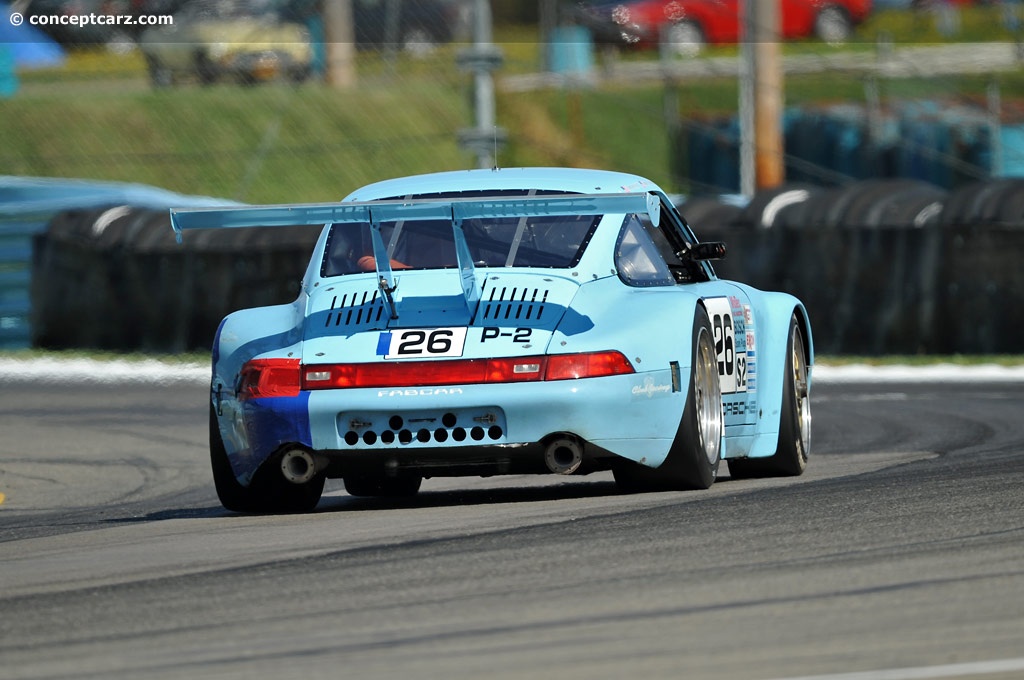
Coupe
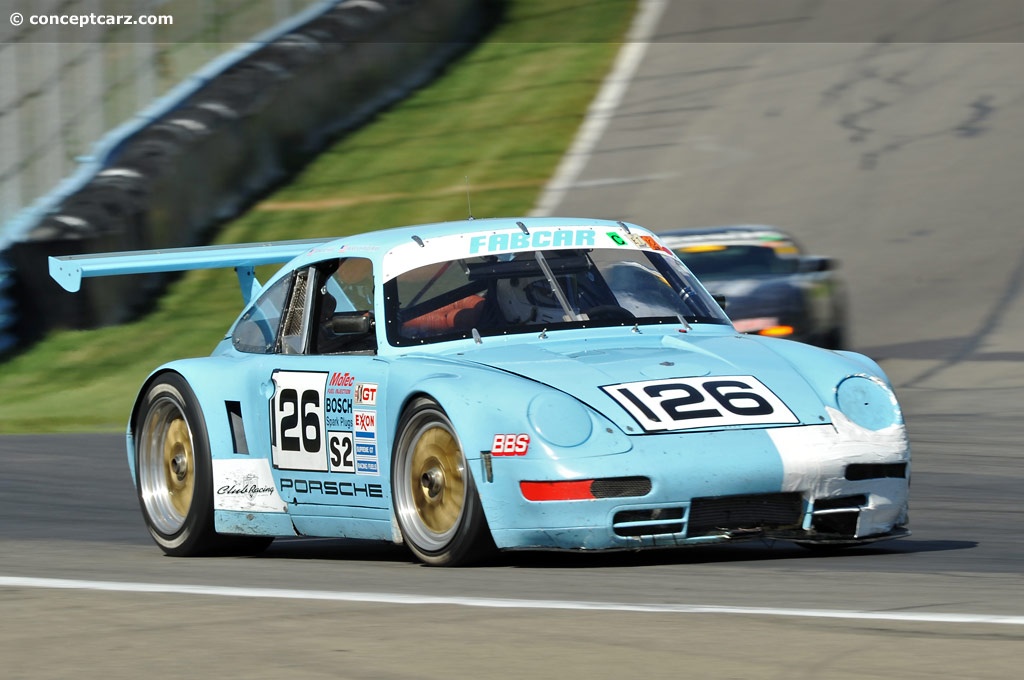
Coupe
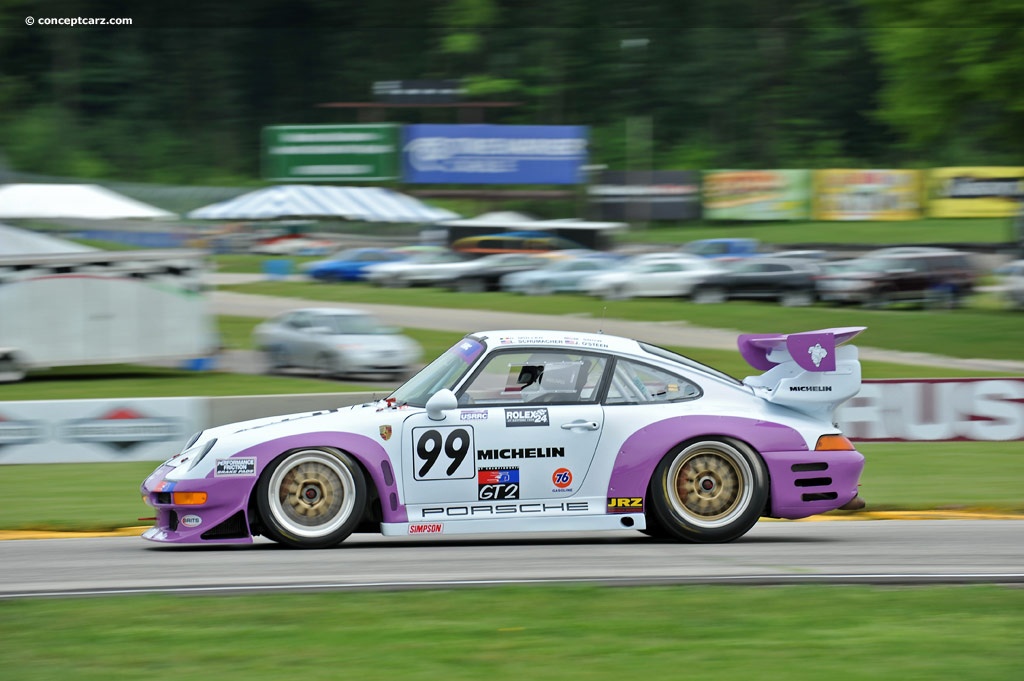
Coupe
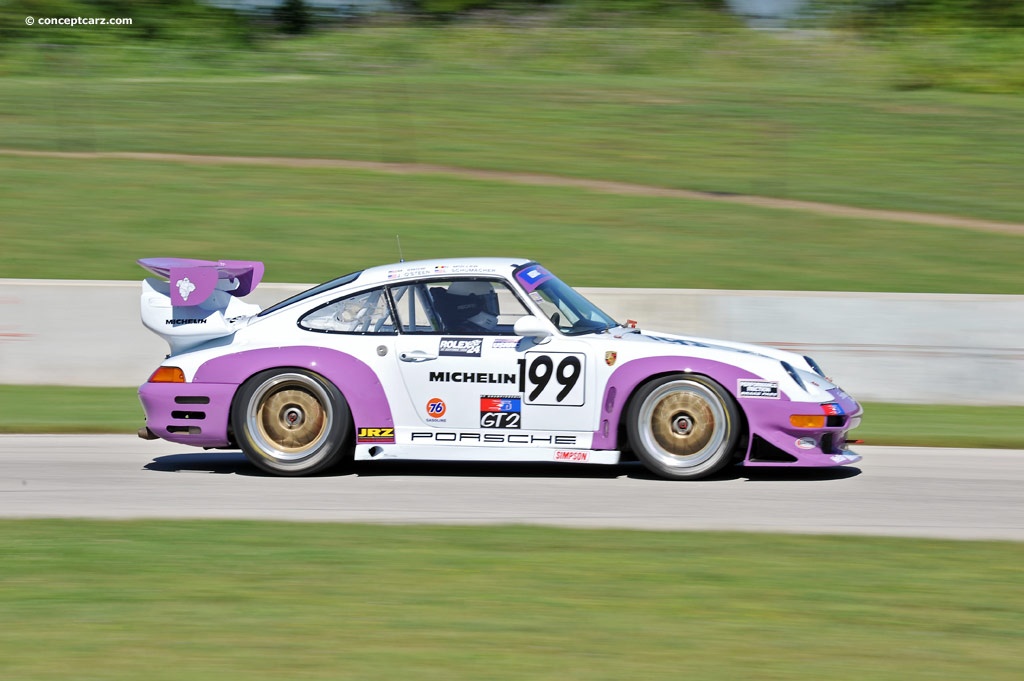
Coupe
by Daniel Vaughan | Jul 2022
Similar Automakers
1996 Porsche 911 GT2 Vehicle Profiles
Chassis #: WP0ZZZ99ZTS392139
Recent Vehicle Additions
Related Automotive News

Subaru Announces Pricing on 2023 BRZ Sport Car
Second-generation lightweight handling sports car 2.4-liter SUBARU BOXER engine Subaru EyeSight Driver Assist Technology available Standard SUBARU STARLINK 8-inch Multimedia system Starting price at %2428,595Suba...

Toyota Announces Pricing on All-New 2022 GR86
Modern sports car designed by enthusiasts, for enthusiasts
Precision handling, low center of gravity and near perfect balance
2.4L flat-four engine rewards drivers with peak torque at lower RPM
Functional vents and spoilers maximize aerodynamics...

All-New 2022 Toyota GR 86: Thrills Around Every Corner
Modern sports car designed by enthusiasts, for enthusiasts
Precision handling, low center of gravity and near perfect balance
2.4L flat-four boxer engine rewards drivers with peak torque at lower RPM
Functional vents and spoilers maximize aerodyn...

Subaru announces pricing on all-new 2022 BRZ
All-new, second-generation lightweight handling sports car New, more powerful 2.4-liter SUBARU BOXER engine Subaru EyeSight Driver Assist Technology now available New SUBARU STARLINK 8-inch Multimedia system Starting price a...

Fastback Kia Stinger Revealed In European Specification
Kia unveils European version of powerful new fastback sport sedan
Three engines for Europe 2.2 litre diesel and 2.0 and 3.3 litre petrol
Designed in Frankfurt, dynamics honed at the Nürburgring
Kia Motors has revealed the European specification...


















